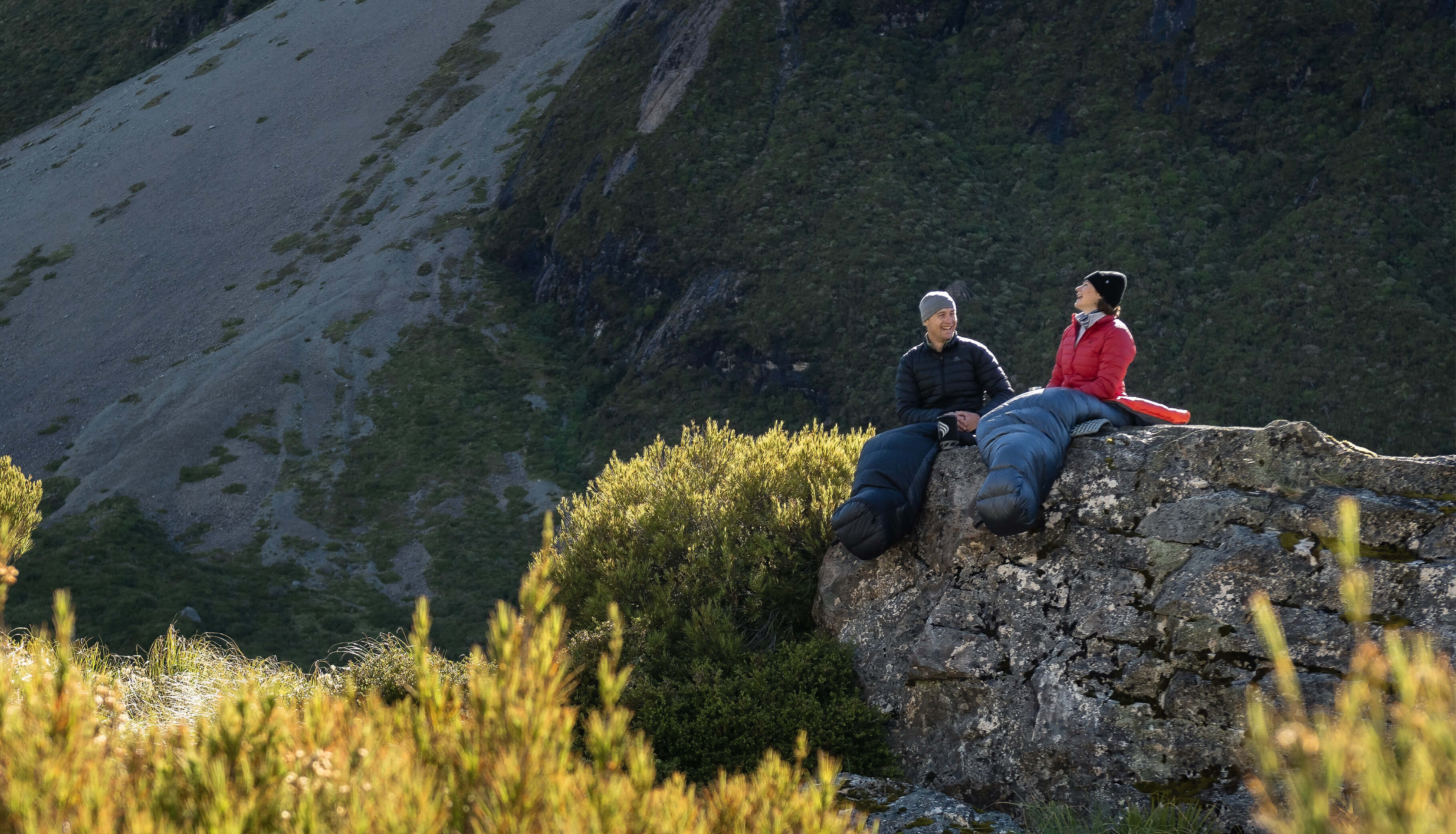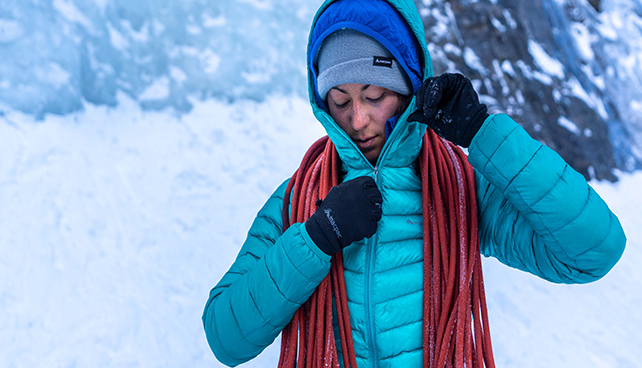
Real trail running is usually more than just a “run”. Often it’s a scramble, or a bit of a bush-bash with a few river crossings thrown in. Unlike road running, you need to carry a little extra gear to be prepared and to keep yourself safe, fuelled, and comfortable for however long you’re out on the trail.
So, whether you’re heading out for a 90-minute run in the hills or a full-day mountain mission, the right gear helps you move light while staying prepared. Here’s our practical guide to choosing a pack and what to carry for your next trail run.
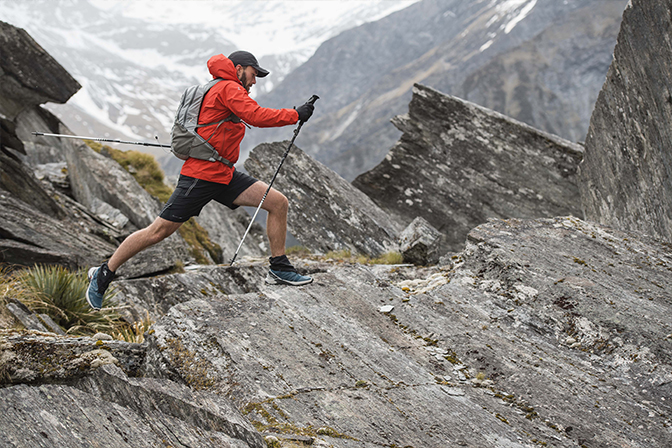
Choosing the Right Pack or Vest
The best pack depends on how long you’ll be on the trail and what you need to bring:
- Short runs (under 1 hour): A handheld flask or minimal vest for water and a key pocket is usually enough.
- 2–3 hours: A lightweight vest with front hydration (soft flasks) and space for snacks, phone, and a windbreaker.
- Half or full day: A 5–12 L running pack that can fit hydration, food, a jacket, and emergency kit.
When choosing, look for:
- Hydration options: Bladder (1–2 L) or front-access flasks.
- Storage pockets: Quick access for snacks and phone.
- Breathable fabrics: To keep sweat under control.
- Adjustable straps: For a snug, bounce-free fit.
- Optional extras: Rain cover, zipped back pocket, or pole attachments.
A good fit is non-negotiable. Your pack should move with you, not against you.
Shop our range of running packs and vests.
Trail Running Essentials
Even when you’re moving fast and light, a few key items are worth the pack space:
- Water (bladder or bottles): Know before you go. Check if you can refill on the trail or if you will need to take enough for trip.
- Trail snacks: Gels, bars, nuts, or dried fruit. Fuel is important.
- Lightweight rain jacket/windbreaker: Sudden weather changes are common in alpine or coastal terrain.
- “Emergency” thermal layer: Something lightweight but warm in case you stop moving. A thermal is ideal.
- Sun protection: Hat or visor, sunscreen, and lip balm.
- Navigation & safety: Phone, GPS watch, or offline map.
- ID and cash/card: For emergencies or refuelling stops if you’re somewhere less remote.
- First aid basics: Blister tape, small bandages.
- Emergency blanket and whistle: Compact and essential for worst-case scenarios.
- PLB (personal locator beacon): Critical for remote trails.
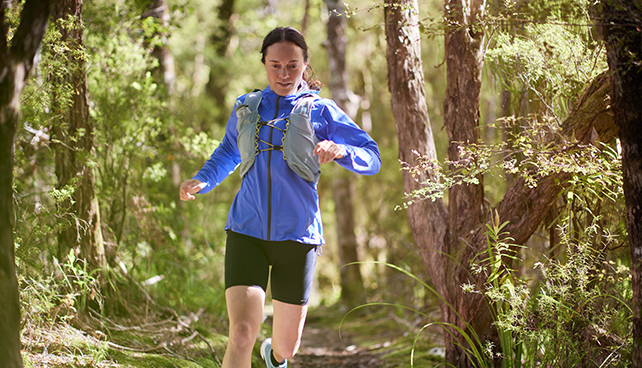
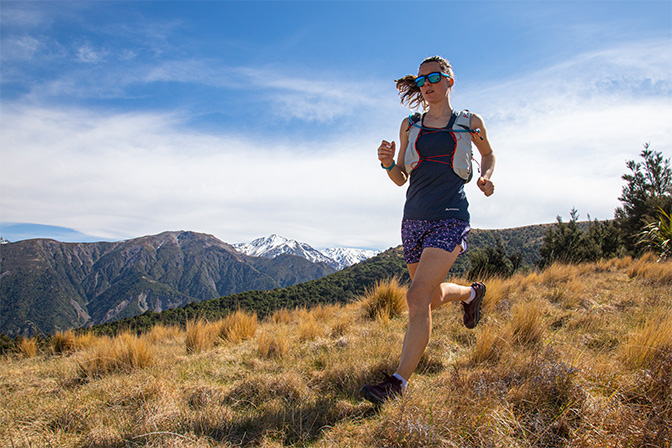
Optional Extras
Weather conditions, distance/time on the trail, and the terrain itself will guide what else you bring. Think of these as “add if needed”:
- Hot weather: Sunglasses, UPF sleeves, insect repellent.
- Cold weather: Gloves, buff/bandana, extra socks.
- Technical terrain: Trekking poles, headlamp for early starts/late finishes.
- Comfort: Anti-chafing cream, spare tape, or small towel.
If you’re heading above the treeline or into alpine zones, those “optional” extras (like a thermal layer or poles) will become essentials.
How to Pack It All
Knowing how to pack a trail running vest is almost as important as what you take. The way you organise your gear can make the difference between a comfortable run and a bouncy, unbalanced one. Here are some simple packing tips for running packs:
- Hydration first: Fill and secure bottles or your bladder before adding anything else. This makes packing easier, keeps weight stable, and helps avoid messy leaks.
- Keep heavy items close to your back: Store jackets, first aid kits, or other bulkier items against your spine to maintain balance and reduce bounce.
- Snacks within reach: Use front or side pockets so gels and bars are easy to grab on the move without slowing down.
- Balance the weight: Distribute items evenly to avoid one side of your running vest feeling heavier than the other.
- Secure small essentials: Always store keys, ID, and cash in zipped pockets so they don’t get lost mid-run.
- Do a quick test run: Once packed, jog around the house or up some stairs. If the pack shifts or feels off, adjust straps or shuffle items until the fit feels right.
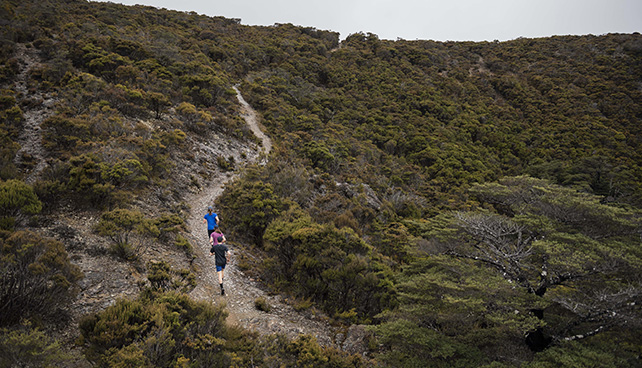

Pre-Run Safety Checklist
You’re ready to go running! Before heading out, take a few minutes to cover the basics:
- Check the weather forecast (and pack accordingly).
- Charge your phone and GPS watch.
- Download maps for offline use if coverage is patchy.
- Tell someone your route and estimated return time.
- Know your limits and your turnaround time. “Just one more ridgeline” can sometimes get you into trouble if you’re not properly prepared.
Stay light, pack smart and you’ll be ready for wherever the trail takes you.
